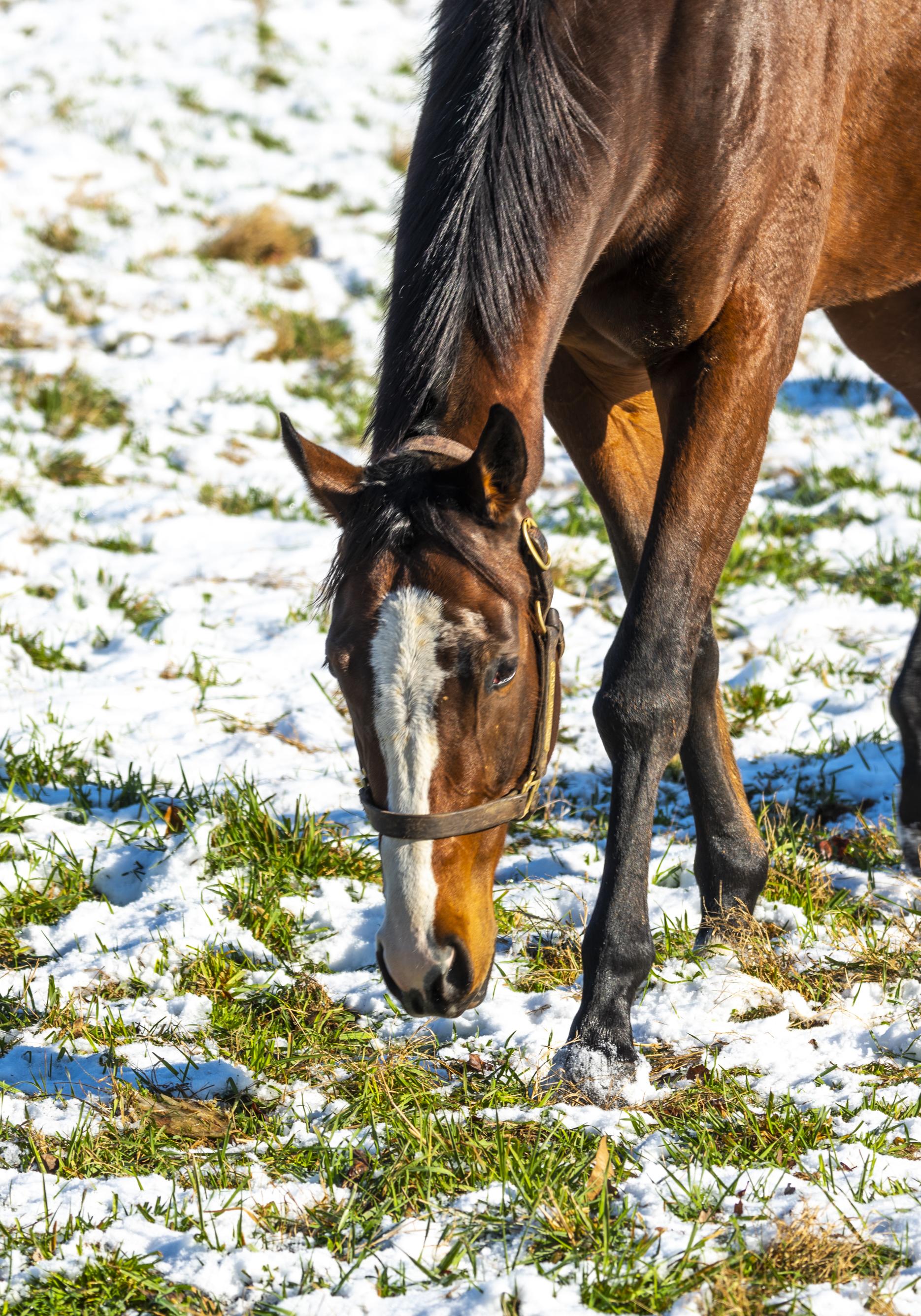Winter Can Mean Poor Footing for Horses

Winter is on the horizon, which means it’s time to talk muddy fields.
Those familiar with horses know that cold seasons can make your farm quite muddy. Mud is not ideal ground for a variety of reasons. First off, it can create erosion of topsoil and the loss of organic matter, while increasing soil compaction. Second it can cause weight loss as horses who traverse through mud expend more energy. They also can suffer because mud on the animals’ coats makes it more difficult for them to regulate their body temperature. This increases the amount of energy they need to generate heat for warmth in the winter. Mud can also up the risk of slipping and falling. And don’t forget lost shoes, the bane of most horse owners.
“In winter you get the same amount of rain as you would in the summer, however, you don’t have the temperatures to evaporate it,” said Stephen Higgins, PhD, director of environmental compliance for the University of Kentucky College of Agriculture, Food and Environment’s Agricultural Experiment Station. “When you mix water, soil and foot traffic, you get a lot of mud.”
Fortunately, there is a solution: heavy-use traffic pads.
“Traffic pads are a great solution,” Higgins said. “You have many material choices for heavy-use pads. Some of these include concreate, plastic traffic grid and geotextile fabric and rock. However, for horses, I would not recommend concrete as they need softer surfaces. The material you use varies depending on many factors, including material availability, installation costs and the size of your operation.”
Pad thickness depends on the type of livestock you have, stocking density and whether the area also gets a lot of equipment traffic. Higgins says with equine traffic, an eight-inch-thick layer of dense grade aggregate placed on a six-to-eight-ounce non-woven geotextile fabric would be the best course of action.
Geotextile fabrics are generally used in road construction projects for subgrade stabilization. The geotextile, which is used to separate the soil from the rock layers, is a key component for effective long-term performance of the traffic pad. If the geotextile is not used, the rock material will sink into the ground over time and mud will seep up through the voids. This would negate all of the work (and money) which had been dedicated toward creating safe footing for horses in the first place. The purpose of geotextile fabric is to separate the rock from the soil, provide reinforcement, and friction, while providing drainage for the rock matrix.
Ideally pads would be located on a summit and not a sloping area. If it must be constructed in a hilly location, the area should be leveled to allow runoff to move across as sheet flow to reduce channeling and erosion of the rock pad.
However, like everything else, COVID-19 has thrown an unforeseen wrench in the works.
“Some things aren’t as cost effective anymore,” Higgins said. “The price of plastic resins has gone up 30% in the past year. So now we’ve had to look at other ideas. Some are a little inventive, such as cinder blocks.”
Higgins says that one idea is to set the blocks on the ground on filter fabric and then backfill it with rock. In addition to providing infiltration, cinder blocks absorb moisture from the environment. The blocks end up acting like sponge in that they wick moisture. This type of footing surface is an idea for indoor areas. A bench top lab study suggested that each block could actually store an entire gallon of liquid. It’s not without its drawbacks, however. This type of flooring might also draw moisture to the surface near an animal and bedding.
“We all want to take care of our horses,” Higgins said. “One of the best ways to do that in the winter is to take care of their footing. Pads can really save owners plenty of headaches down the road.”
More information for installing pads for horses can be found online at http://www2.ca.uky.edu/agcomm/pubs/id/id164/id164.pdf.
Jordan Strickler is an agriculture communications specialist within UK’s College of Agriculture, Food and Environment.
